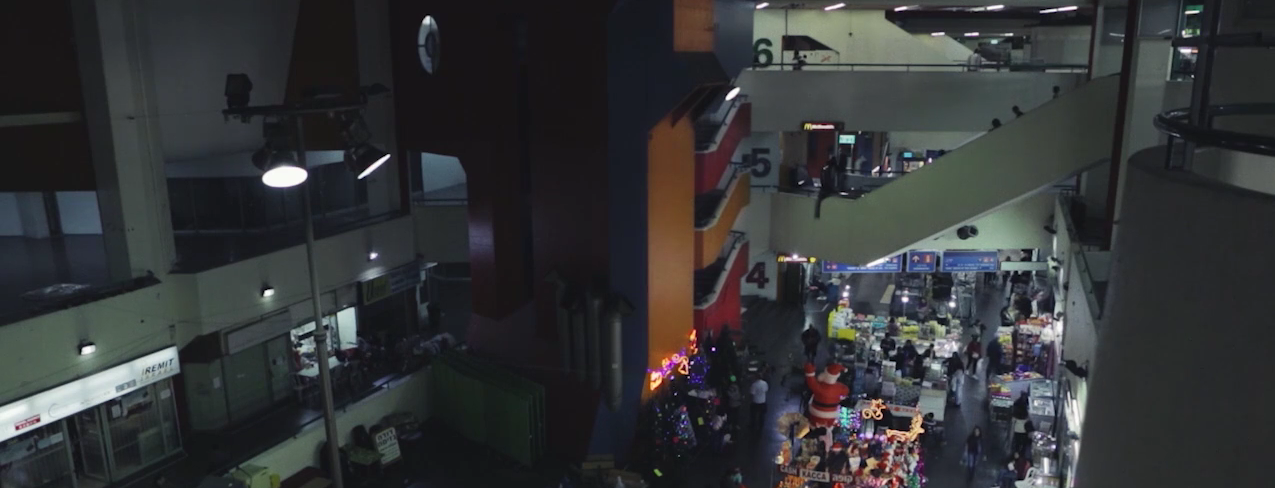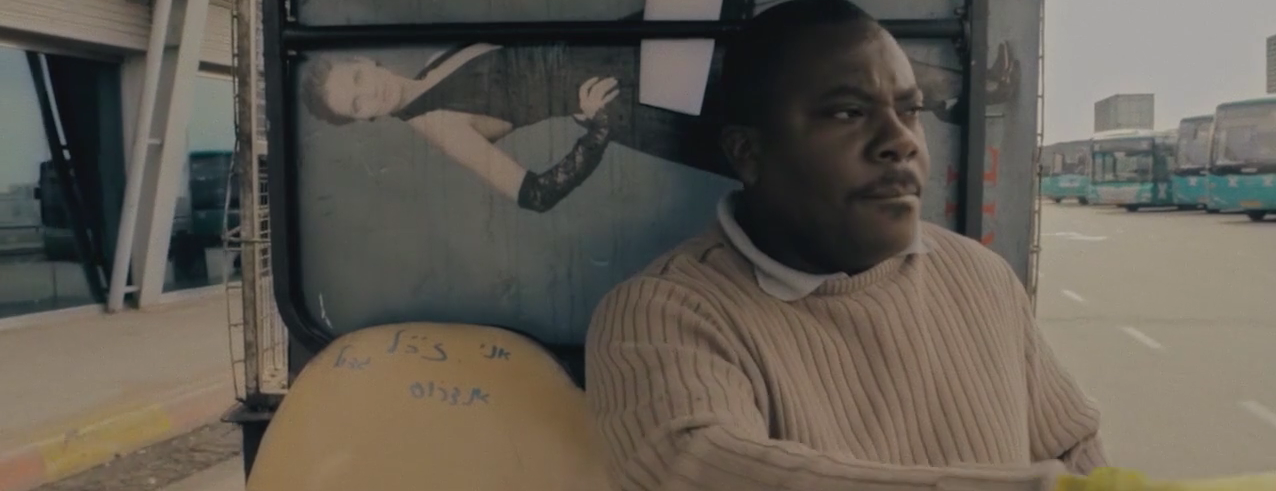Central Bus Station – A review by Daniela Esposito

Planned in 1967 but not fully built until 1993, the station soon acquired the name, The White Elephant to denote the gift given by a king to his enemy which depletes the kingdom’s resources so that it eventually collapses; the greatest way to destroy his adversary. The bus station was built by the government to bring visitors to the shopping mall, with sections sold to private owners to mitigate the national debt. Many of the owners have since abandoned the shops and successfully sued the government, having failed to receive the commercial venture they were promised. The station has now been partially abandoned. Yet it continues to stand as a dark husk, a reminder of its own failure; the white elephant hovering above like a cloud.
Much like it’s confusing structure, the central bus station is riddled with contradictions. Whilst sections are bustling and vibrant, home to busy Filipino food outlets and a Christian church where the otherwise marginalised immigrants congregate, other sections are barren and deserted. One shop owner speaks of the darker side to her work as the government will not allow her to return if she leaves to take care of her dying mother. Underpaid and overworked, she is forced to work to support her family at home in the Philippines. An African immigrant has been working at the station for 17 years. Due to long working hours and the building’s design, he rarely sees the light of day. The station also houses the homeless, prostitutes and bat colonies.
In many ways the documentary feels more like an art form than a documentary. The footage often has a grainy ‘experimental’ quality with high definition close-ups of the bats and the bugs which inhabit the space which emphasize the sheer expanse of the building. Through cinematic shots of the brutalist architecture, Elšík draws our attention to the design itself which is believed to have been intended by architect Ram Karmi to induce a mental chaos in those who found themselves between its Kafkaesque and labyrinthian walls. Presumably, lost within a shopping mall they would be more likely to consume. What ostensibly appears as a place of promise and social utility is undercut by darker forces of manipulation. It is in this way that in spite of its robust concrete walls, it is not immune from the politics inevitable in any society.

Yet in spite of all of this, Yonathon Mishal describes how, within a society marred by war and the persecution of minority groups, the central bus station is home. He expresses an especial kindredness for the structure which borders on the macabre, perhaps because he has found home in the most unlikely of places. He even offers guided tours of its eerie interior to foreign tourists. In fact, the central bus station provides a place of respite for those who are otherwise on the fringes of society. It is home to the Yiddish Museum housing 50,000 books in Yiddish which line the walls like Israel’s forgotten Yiddish writers who, the owner argues, helped to build the country we see today. This is a place to honour them.

Contrasted to those on the fringes of society are those who conform; the young militia can be seen passing through the station. One female soldier describes the solidarity of the uniform where cultural differences dissolve within the structure and rhythm of military life. Yet, Mishal argues how in conforming to the hierarchy the soldiers become vulnerable to oppression; they find belonging, but they then belong to, as if what is comfort is also capitulation; the bitter-sweet contract that is society and the institutions of which it is comprised. Yet the juxtaposition of both the marginalised and mainstream communities reveals the station as a microcosm for society; a living organism that replicates the outside world.
At times, Yonathon Mishal’s narrative borders on conspiratorial. I would have been interested to have been presented with a wider breadth of personages from those who inhabit the station as well as the personal story of Mishal. With dark grainy shots and foreboding music, the viewer is often left little space than to acquiesce to the presentation of the bus station as an ominous and sinister place. I think it is always important to remember that any documentary is a story in its own way, the subjective experience of the filmmaker and in this instance, the central protagonist.
Central Bus Station is a visually arresting and compelling exploration of cultural alienation, the spaces we inhabit and how they shape us. The station is revealed as a kind of anthropological petri dish, a mechanism to study what it means to belong, and ultimately how even those who do not belong can find home, even in the most unlikely of places. In the words of the Yiddish book-keeper: "if you can acknowledge the abyss that exists between how the world looks and how it should look, then the abyss itself can provide you with a safe space."
Daniela Esposito
The film is part of the KineDok 2020 catalog and will be available in local filmclubs. For more info about upcoming screenings, visit KineDok Hungary's FB page or website.